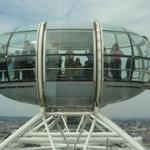 Thorsteen schrieb:Und ich bringe mein 150/750er Teleskop mit, und wärend ich mit @skagerak zusammen eine Flasche Holunderwein süffel und wir gemütlich grillen,da hast du genügend Zeit 3 Sternbilder zu suchen und zu finden. Also sagen wir mal mindestens 60 Minuten, das macht 20 Min pro Sternbild, und das sollte man auch als Anfänger hinbekommen. Die 3 Sternbilder die du uns zeigen musst sind:
Thorsteen schrieb:Und ich bringe mein 150/750er Teleskop mit, und wärend ich mit @skagerak zusammen eine Flasche Holunderwein süffel und wir gemütlich grillen,da hast du genügend Zeit 3 Sternbilder zu suchen und zu finden. Also sagen wir mal mindestens 60 Minuten, das macht 20 Min pro Sternbild, und das sollte man auch als Anfänger hinbekommen. Die 3 Sternbilder die du uns zeigen musst sind:
Kreuz (Crux)
Altar (Ara)
Zentaur (Centaurus)
Da ja deine ganzen Bilder aus der "guten, alten Zeit" stammen finde ich die Lehrmethoden von damals auch sehr passend, pro nicht gefundenem Sternbild gibt es je 10 Stockhiebe. Wenn du die findest darfst du mir und @skagerak jeweils je 20 pro gefundenem Sternbild geben. Ganz einfache und todsichere Sache. Müsste nur eine Neumondnacht sein, beim Vollmond ist es echt ätzend.
Also gut, buddy
:rock: Bring du das Teleskop mit und ich bring den Stock. Keine Angst, ich such einen guten aus. Der schön peitscht.
Mal sehen, der nächste Neumond dürfte am 11.8. sein. Bis dahin hab ich ja noch n bisschen Zeit zu üben.
 tris schrieb:Ich wusste es. Na und?
tris schrieb:Ich wusste es. Na und?
Ändert es etwas daran, dass es dennoch Erdgloben auch gab? Oder daran, dass schon Aristoteles Gründe für die Kugelgestalt der Erde brachte?
Aber nicht vor 1492. Obwohl, wenn Astronomen Himmelsgloben - also Kugeln, mit der Sternenkarte außen drumherum nutzen für ihre Entdeckungen - dann nutzten vielleicht auch Seefahrer wie Kolumbus Erdgloben um besser navigieren zu können? Allerdings glaubte wohl kein Astronom dass sie es in der Realität mit einem echten kugelrunden Nachthimmel zu tun hatten. Die Seefahrer wohl dann auch nicht, dass die Erde auf der sie segeln eine Kugel ist.
Lesen wir mal? Wer erschuf den ersten Erdglobus?
Martin Behaim erhielt 1492 auf eigene Initiative hin vom Nürnberger Rat den Auftrag, einen Globus anzufertigen, der die damalige, bekannte Welt abbilden sollte. Unter Anleitung Behaims wurde der Globus schließlich ca. 1492–1493 von verschiedenen Handwerkern gefertigt.
Wikipedia: Martin BehaimIntressant, dass es bis 1492 gedauet hat, bis einer mal auf die Idee kam, einen Erdglobus anzufertigen statt immer nur Himmelsgloben - obwohl ja angeblich seit Aristoteles - v.a. schon im mittelalter bekannt gewesen sein soll, dass die eRde eine Kugel ist! Aber nein, Behaim war der erste - zumindest sind keine Erdgloben-Darstellungen und Gebilde aus der Antike oder vom Mittelalter überliefert. Auch interessant, wenn man bedenkt, dass 1492 das Jahr war, in dem sich Columbus aufmachte Indien zu entdecken und die ganzen Herrscher mit ihre seefahrern darauf aus waren, immer mehr von der Welt zu entdecken.
Explorers were sent by emperors, kings and queens to find and conquer new land in the name of their empire, so colonies could be established. Upon their return, explorers would tell their tales and provide globe makers with their ship logs and diaries on newly discovered land.
http://omniterrum.com/wp-content/uploads/2014/02/1938-globe-family-264x300.jpg (Archiv-Version vom 26.05.2016)So wie die Himmelsgloben den Astronomen bei ihren Entdeckungen halfen, halfen Erdgloben Seeleuten etc. dabei Seewege anschaulich darzustellen
 https://nails.newsela.com/s3/newsela-media/article_media/2017/06/lib-16th-century-navigation-instruments-4d06af98.jpg?crop=87%2C547%2C1261%2C1207&height=497&width=885
https://nails.newsela.com/s3/newsela-media/article_media/2017/06/lib-16th-century-navigation-instruments-4d06af98.jpg?crop=87%2C547%2C1261%2C1207&height=497&width=885SEVENTEENTH CENTURY DUTCH GLOBES : NAVIGATIONAL INSTRUMENTS? / WAREN DIE HOLLÄNDISCHEN GLOBEN DES 17. JAHRHUNDERTS FRÜ DIE SCHIFFAHRT BESTIMMT?
https://www.jstor.org/stable/41628926?seq=1#page_scan_tab_contentsUnd so startete die Produktion von Erdgloben
At the time, most globe makers were mostly men of the cloth, as they also had been teachers, employed by lordships. One was Coronelli, whose globes, made for Louis XIV, were so remarkable, that he was showered with additional requests of globes. Vincent Coronelli was the first to be paid for his skill and knowledge as a globe maker. He requested and received a pension for his trade.
At this time the globe was a status symbol. A must-have for any emperor, bishop, lordship, or well established merchant. Many paintings of this era displayed these people of power with globes. Globes would be found in churches, as part of statues or buildings, as part of attire or in form of an “Erdapfel” in ceremonies. It was not an item the common man could acquire.
http://omniterrum.com/wp-content/uploads/2014/02/1938-globe-family-264x300.jpg (Archiv-Version vom 26.05.2016)https://www.concrete-matter.com/blogs/concrete-journal/6613449-the-story-about-globesWith the growing status as a sea faring and exploring nation, the Dutch demand for globes increased rapidly. Rich merchants and Dutch East India Company’s captain families wanted to be able to know where there ships and loved ones where going. Amsterdam became the new epicenter of globe production, high quality map making and nautical and navigational instrument making. The famous Blaeu family became a real dynasty of map and globe makers
18th Century
Though The Netherlands where still among the most important globe producing countries, France, England and Germany were also joining in as the demand for globes increased. This also resulted in more ‘clean’ globes with less decoration. The decorations in the form of animals depicting zodiac signs, miniature ships or flags started to disappear from the globe maps.
From 1780 onwards the British globe makers were in the lead leaving the other globe producing countries behind them. Great Britain became the commercial and scientifical epicenter of the world with an ever and rapidly exapanding empire
The globe became more available to the middle class. During the 18th and 19th centuries, it was fashionable for “a man of world” to carry a pocket globe, a small 2-3 inch globe along with his pocket watch.
Globes became commonplace as an educational apparatus in schools. Other oddities appeared, such as the first “blow-up” globe (Brett’s) as well as tin toy models.
During the 16th century, globes remained the prerogative of educational elite; by the 19th century, they had become a familiar object in schools and private homes.
It became fashionable décor to have a globe in your home. The first tin toy models appeared as well.
The globe, once a status symbol for the elite, has now gone mainstream.
Yet no GPS system or Google Earth will ever be able to replace the feeling acquired when holding the world in your hands.
http://omniterrum.com/globe-history/So kam die ganze Scheiße nämlich ins Rollen. Vor 1492 war niemand auf die Idee gekommen, die Erde als Kugel a la Globus darzustellen. Der wurde erst mit der Schiffahrt notwendig. Auch wollte man die Erdkarte dreidimensional darstelen - u a um damit Seefahrer dazu zu bringen, weitere Landmassen und Inseln zu entdecken. Dann kam die Produktion alls Status-Symbol und Dekoration - mit der Industriellen Revolution dann die Massenproduktion.
Und dann im 19 Jahrhundert mit den Run auf den Kolonien wurden diese Ideen auch in Indien unter jungen Leuten verbreitet.
Hier kann man es nachlesen. Scheint ein sehr interessantes Buch zu sein
 Original anzeigen (0,8 MB)
Original anzeigen (0,8 MB)According to the ancient Indian Hindu scriptures called the Puranas, the Earth is shaped like a disc and it rests upon different animals in different versions—the cobra, the elephant or the turtle. In her new book Terrestrial Lessons, historian Sumathi Ramaswamy says that in the process of signing treaties and carrying out diplomatic negotiations with the rulers of the various small kingdoms in the subcontinent from 18th century onwards, the officials of the British East India Company saw an interesting opportunity in these myths. They began to “smuggle in” the various curiosities of modern geography—the globe, the maps, the atlases, the orrery, and treatises on geography and astronomy—to be presented as gifts to the native kings, to impress upon them the superiority of European knowledge system. The objective was not just sharing of knowledge, learning and scientific temper. It very smartly concealed the real agenda: an “epistemological and cognitive takeover of the world by other means.”
She explains that the question “What is the shape of the Earth?” is a “gatekeeping question” that the British used to identify the knowing, modern Indian subject (to determine “entry into the select club of the educated and the enlightened”) because it mostly close represented a “scientific” way of looking at the world, nature, life, and even religion in general. In studying the way the question is framed and asked, and its answer explained and demonstrated with the help of the globe, Ramaswamy gives many insights into how South Asians were given a sense of the world and their “proper” place in it, and colonized, with the use of science as the method. In other words, they were “worlded”
Ramaswamy reconstructs the ways in which the “innocent” globe was turned into a “weapon of mass education”, and a ploy in the civilizing mission of the empire. Children were recruited as appropriate targets for the reception of the gospel of geography.
http://asianreviewofbooks.com/content/terrestrial-lessons-the-conquest-of-the-world-as-globe-by-sumathi-ramaswamy/Meinungen dazu:
Gauri Viswanathan, Columbia University
“This is a fascinating study of the globe as material artifact and analytic concept in the shaping of colonial minds. At once an instrument of nation building and secular thinking, geography emerged as a key subject in what Ramaswamy aptly calls ‘pedagogical modernity’, dislodging inherited cosmological views of the earth. Whether to inculcate a vaunted sense of worldliness in Indian princely rulers or a modernizing sensibility in young learners, the terrestrial globe became a vital icon of British imperial dominance, as this well-researched book admirably demonstrates.”
http://press.uchicago.edu/ucp/books/book/chicago/T/bo26637926.htmlVery telling
Oder auf deutsch: Gehirnwäsche der allerersten Güte
Auch heute glaubt fast jeder noch Erdgloben wuden erfunden, hergestellt und massenproduziert, weil die Erde eine Kugel ist.

















